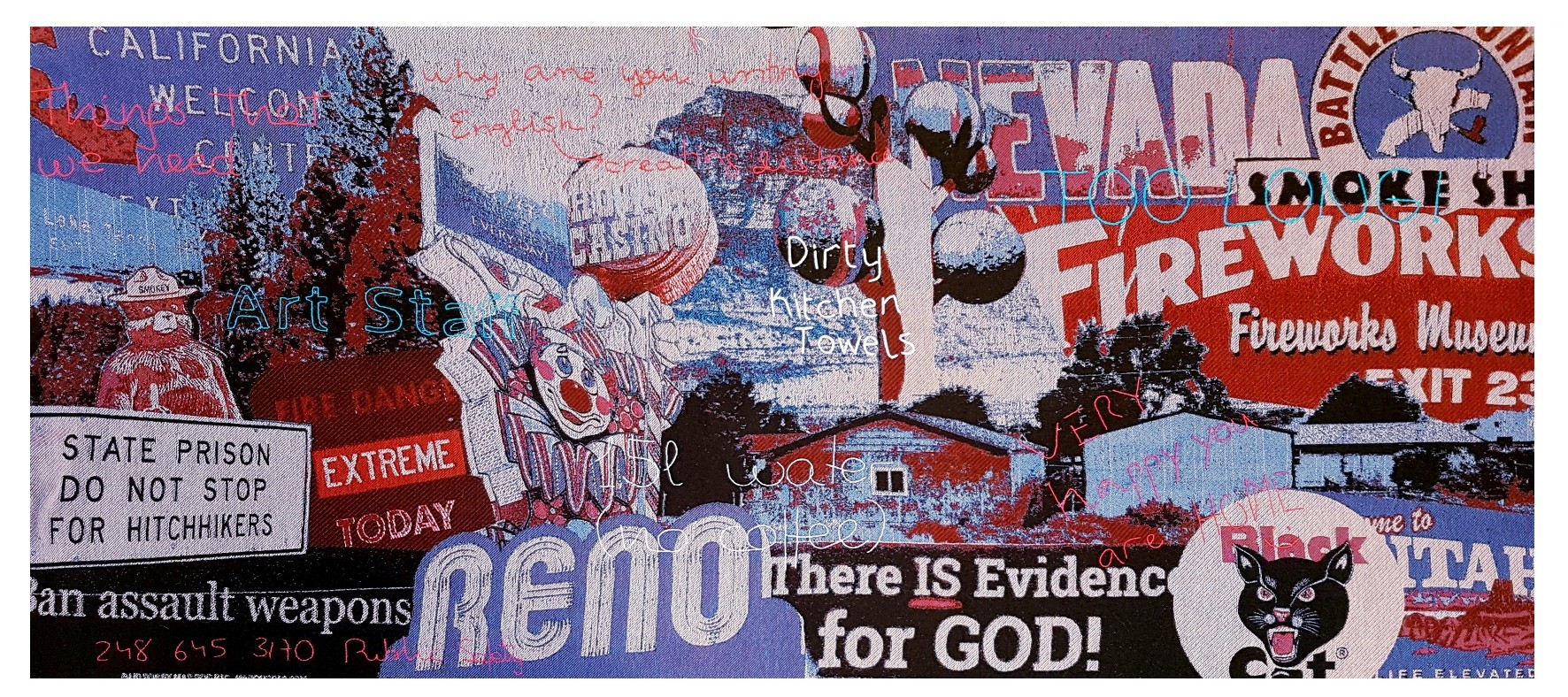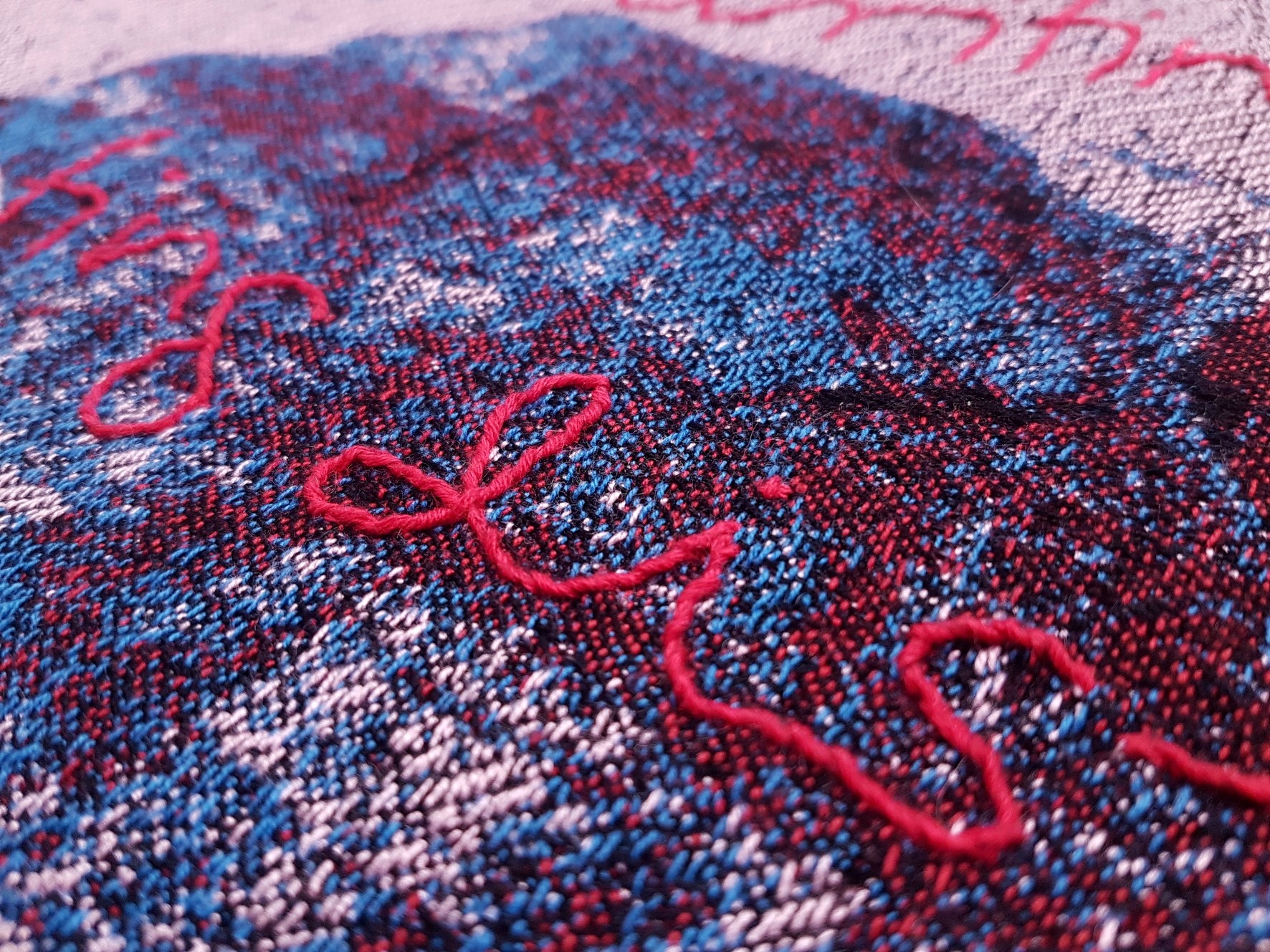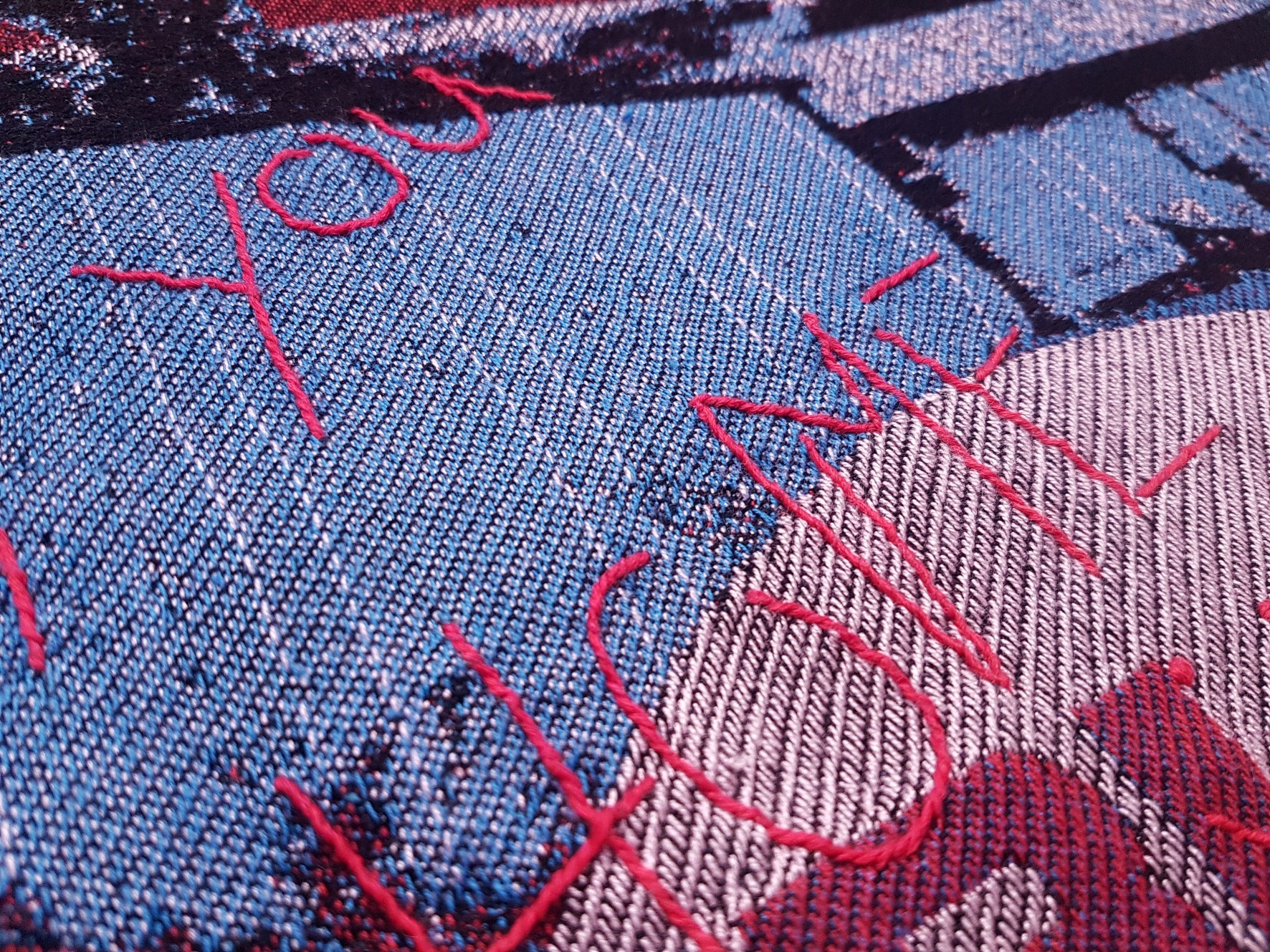Creative human being with a passion for soft materials
Weaving
Mapa tejido de la Interestatal 80 (Woven map of the I80)
2018 - 2019
In September 2015, I moved to Michigan (United States) to pursue a master's degree in Textile Art at the Cranbrook Academy of Art, thanks to a scholarship from the LaCaixa Foundation. Since then, I have worked almost exclusively with manual weaving techniques in my artistic work, influenced by family tradition, and the work of artists such as Anni Albers and Gunta Stolz, whom I was able to meet during my year of stay at the Bauhaus University in Weimar. The words 'text' and 'weave' have the same Latin root, texere, which means to weave, interlace or braid. Just as the threads of a fabric compose its weft and warp, words and their meanings, their authors and readers, and the time and space in which they exist, interweave in different ways.
For the past three years, I have been exploring the presence of text in textile works, mainly through manual weavings made on a low-warp loom. In the work presented below, I propose a different technical approach. Although some of my tapestries had incorporated hand-embroidered texts, for the first time I make use of images and a non-manual digital technique such as jacquard weaving.
'Mapa Tejido de la Interestatal 80' began to take shape in August 2018, based on a road trip from Michigan, the American state where I had been living for the past three years, to California. An intense three-day trip through Interstate 80 - or I80 - with its cornfields, farms, oil refineries, salt deserts, fire-ravaged mountains, truck stops, seedy motels, big cities, and impoverished suburbs. Michigan, Indiana, Illinois, Iowa, Nebraska, Wyoming, Utah, Nevada, and California. During this trip, which lasted approximately 36 non-consecutive hours, I was able to take a series of photos and videos that show the contrasts - landscape, economic, and cultural - of a country as vast as the United States. With the images, I created three collages, one for each of the three days of the trip, which were woven on a digital loom in California during the month of October. The chosen color palette - red, blue, white, and black - not only visually harmonizes the images but also refers to the flag of the country and all the paraphernalia, festive and propagandistic, that decorates shops, homes, and streets as a celebration of American nationalism. This amalgam of images serves as a background, a visual context, almost like a theatrical decoration, to narrate, through embroidered text - of a more personal and intrinsic nature to my particular experience - a time that marked my artistic, personal, and professional life.
The embroidered text follows the same color palette, not only for aesthetic reasons but also to represent the process of adaptation to which a person foreign to a foreign culture is subjected. How to blend in, go unnoticed, adapt... without losing one's own essence?
The different texts, most of them in English and not in Spanish, are taken from received postcards, personal notes, notes taken by me or colleagues during classes, bank checks, identification cards, and text messages, among others.
The language we speak - listen to, read, write - shapes our way of thinking, of expressing who we are, of being perceived by others. Doing all this in a recently acquired language allows you, by imposition and voluntary will, to experience life in a different way than you knew before.
The use of a digital technique in combination with a manual one has allowed me to explore, using textile language, the differences - and points of connection - between the context of the United States, determined by historical, social, and cultural circumstances beyond my reach and control, and my personal experience, dependent on my own decisions and eventualities. For the last three years, my work has been based on fabrics in which I combine texts in English and Spanish, seeking to reflect on topics such as bilingualism and cultural displacement and hybridization. With "Woven Map of Interstate 80," made possible thanks to the Artistic Production Grant from the University of Granada, I put an end to this period and, with the enthusiasm of uncertainty, move on to new artistic endeavors.
January, 2019








